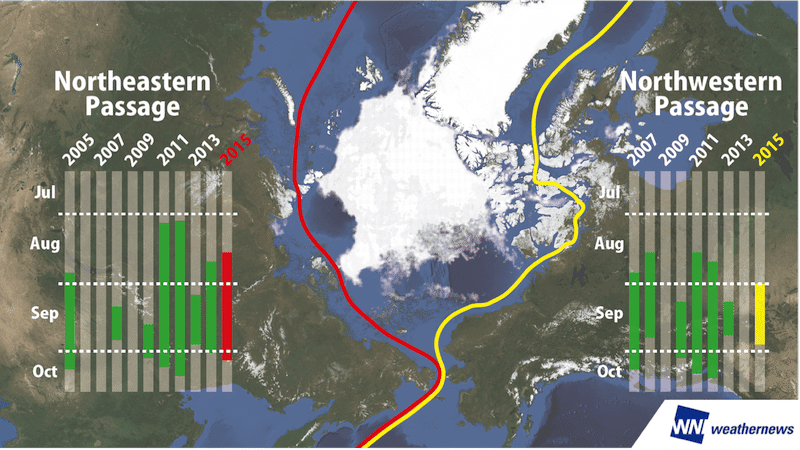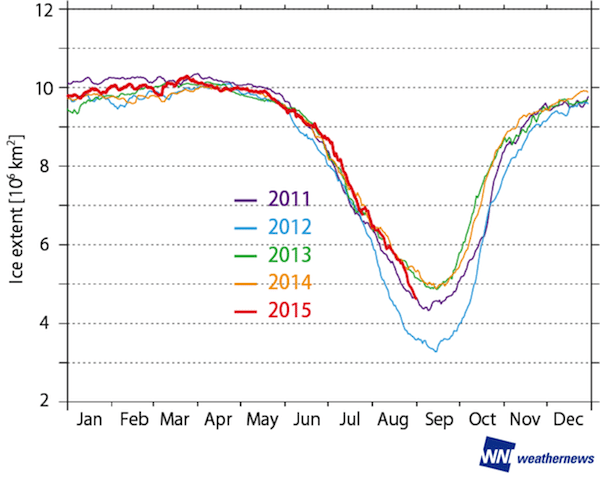
With the opening of the Northern Sea Route (NSR) through the Russian arctic earlier this month, the two major shipping routes through the Arctic are now both officially open for business.
The NSR, running entirely in arctic waters along the Russian coast, opened this year on September 3rd following the opening of the Northeast Passage on August 18th and the Northwest Passage, across Canada and Alaska, on September 1, according to the Global Ice Center (GIC) at Weathernews, a private weather service company headquartered in Japan.
This year marks the first time both passages have opened since 2013.
The Northeast Passage is expected to stay open until early October with the Northwest Passage closing by late September, making it possible for commercial vessels to enter the icy region, Weathernews says.
The company notes that ice in the Arctic Sea is melting at a fast pace and has already reached the third-lowest ice cover extent observed in the NSR. Ice started melting in early August, receding enough to open both passages.
In 2014, the Northeast Passage remained closed due to ice in the Vilkitsky Strait connecting the Kara and Laptev Seas. The Northwest Passage also remained closed last year due to lingering sea ice in the Barrow Strait.
Currently, sea ice in the Arctic has shrunken to about 4,600,000 square kilometers, the same as observed in 2012 and third smallest area since 2007, according to the GIC.

“The GIC expects ice to continue melting until mid-September when air temperatures will start to fall, and sea ice refreezes outward,” the company said in statement to the media. “In the northwest passage where ice easily freezes over the many islands, closing is expected in the latter half of September, followed by the northeast side in October when coastal ice reappears, and closes the route.”
Warm air and rising sea temperatures rising are considered major factors in this year’s melt, the GIC said.
Weathernews says that to help with better forecasting of ice conditions in the arctic, the company is preparing the launch of a new satellite in 2016, called WNISAT-1R, to improve the quality of data and analysis in the region.
Tags:

 Join The Club
Join The Club













